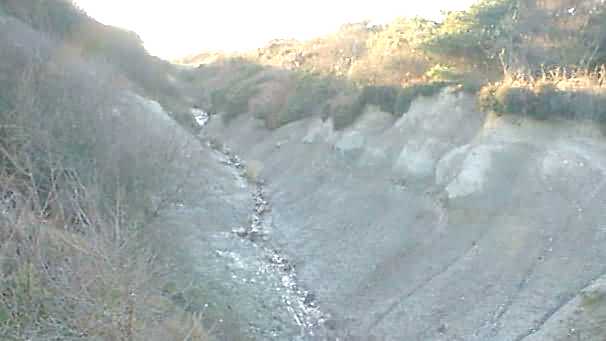Hengistbury Head from the Roman Period to the 16th Century
The Roman Period 43AD - 500 AD
The advent of Roman rule in 43 AD initially had little effect on the trading activities of Hengistbury Head, indeed locally minted coins appear to have remained in circulation for over a hundred years after the Romans had landed. Perhaps because of its remoteness from Roman authority and maybe because it posed no threat to Roman rule it appears that Hengistbury Head was generally left in peace. The Iron Stone Doggers, a sheltered harbour and a ready supply of charcoal for smelting iron from the Doggers also gave Hengistbury Head a value to any occupier, but only if it was left alone and not interfered with.Greater effect was felt indirectly as Rome closed its grip on the trading partners of Hengistbury Head. The Roman occupation of Gaul led to a marked decrease of trading from Gaul (France) to English settlements like Hengistbury Head and subsequently had an effect upon Hengistburys' trading patterns and partners.

A permanent scar on the landscape of Hengistbury Head is the Northern end of the 19th Century Iron stone quarry. Yet exploitation of the Iron Stones dates back to pre-Roman times and was do doubt one of the main resources of this headland in medievel times.
Trade from the head declined over the Roman period, probably as trade relocated to centres nearer Roman influence and wealth. Less than 100 Roman coins have been found on Hengistbury Head.
The ending of the Roman occupation around 450 AD paralleled the final decay and abandonment of iron age habitation of Hengistbury Head. Why this final abandonment occurred is uncertain. Iron Ore was in abundant supply and the harbour was still functional. While international trade conducted from Hengistbury Head had been in decline since the arrival of the Romans, there was still a viable industrial centre on Hengistbury Head. The abandonment was possibly due to intimidation from Saxon and Jutish raiders or more probably due to the relocation of both trade and manufacture to larger centres of population.
The end of Roman occupation of England saw Hengistbury head return to wilderness and seclusion for several hundred years.
The Middle Ages and Hengistbury Head
Hengistbury Head probably passed the first few centuries of the first millennium as little more than a lonely promontory, several hundred yards from the sea, visited solely by occasional hunters. Due to the marginality of the soil and its remoteness, few people spent time there. The population of the whole of England at this time was at best, only a few million and poor quality farming land like Hengistbury Head must have figured far down their list of preferred sites.
The next utilisation of the site did not occur until the 9th century when Alfred the great sought to revitalise the harbour in defence of Wessex against the continental raiders of that time. Alfred constructed a Burgh (defensive settlement) on the site now occupied by the town of Christchurch and no doubt Hengistbury Head became a lookout for the defence of Wessex, although no artifacts from this period has yet been found at Hengistbury Head.
Hengistbury Head and the Norman Conquest
Hengistbury Head is first described as Hedenesburia in the late 11th century in a document granting Christchurch Priory domain over "Hedensburia and all that is adjacent". The grantor was Baldwin de Redvers, the Lord of the Manor of Christchurch, Twyneam. During this time the Normanswere enforcing their will upon the native population. A local defensive fort was built at Christchurch,and today one can see that some of the stone, at least, came from Hengistbury Head. More information on the Norman castle and the nearby Constables Keep (both dating from the 12th century) can be found at the following internal link: Christchurch Castle
Hengistbury Head in the 16th century
Hengistbury Head was known as Hynebury or simply Christchurch Head(s) in the 16th century. It only became known as Hengistbury Head after the discovery of stone and iron age artifacts there. Being inspired by romanticism rather than actual evidence, and distracted by the 11th century reference to "Hedenesburia" gave the gentry of the time inspiration to rename Hynebury after Hengist, hence Hengistbury Head. Interestingly Smeaton, in his report on possible harbour improvements (see later) refers to Hengistbury Head or Heads and then goes on to describe a dual prominence with a small inlay or bay between them. It would appear that today one of the these headlands has been totally lost and that Hengistbury Head was really Hengistbury Heads (or Christchurch Heads) prior to the 17th century.